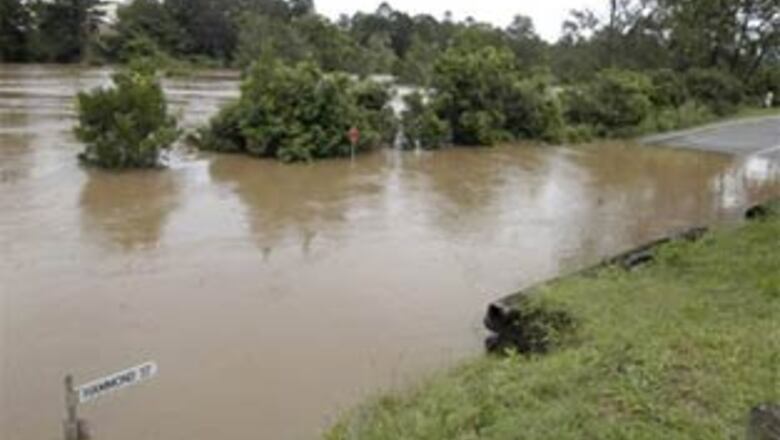
views
Sydney: Authorities put helicopters on standby for emergencies on Tuesday as they evacuated residents from homes north of Sydney inundated by floodwaters, while wildfires continued blazing in the country's drought-parched south.
Australia's populous east coast has been beset by weather extremes of fiery drought and torrential rains that scientists argue are being exacerbated by climate change.
The Bourke region of New South Wales state's northwest was declared a natural disaster area Tuesday after 20 homes and several government buildings were flooded, State Emergency Service spokesman Phil Campbell said.
High water also isolated about 5,000 people in towns, villages and farms across the state's north, he said.
The Bellinger River burst its banks on Tuesday, prompting the evacuation of homes and businesses in the town of Bellingen, which has a population of 3,000, and communities downstream, police Chief Inspector Shane Cribb said. With more rain forecast Wednesday, the flood risk has not passed.
"We'll be making sure that we have sufficient helicopters as well as volunteers and flood boats in that region to answer any requests for emergency evacuation," Campbell said.
To the north, most of Queensland state has been submerged for weeks by the worst flooding in three decades, with more rain expected during the tropical monsoonal season.
Seven people have died, hundreds are homeless and tens of thousands of livestock are starving as vast areas of the state resemble an inland sea.
With floods affecting 62 per cent of the state, the state government said Tuesday that damage would exceed 210 million Australian dollars ($136 mn).
South of the New South Wales border, Victoria state firefighters have had little rain to help them battle wildfires that have ravaged a parched landscape and that flared up on Feb. 7 to kill at least 189 people.
The state capital of Melbourne is headed for a record dry start to 2009, with less than one tenth of an inch (2.2 millimeters) of rain since January 1.
Meteorologist Phil King said Tuesday the city was likely to receive less rain by the end of February than the record 0.43 of an inch (1.1 centimeters) set in 1893
















Comments
0 comment